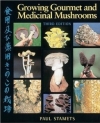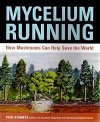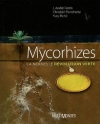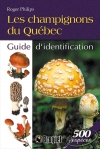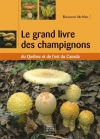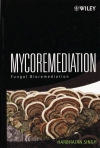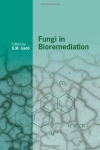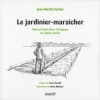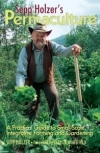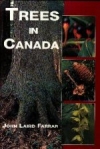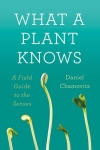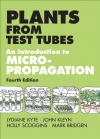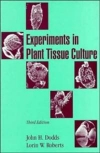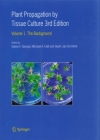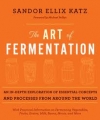Modèle:
Lectures suggérées
Mycologie
Growing Gourmet and Medicinal Mushrooms (Paul Stamets, 2000)
After years of living in awe of the mysterious fungi known as mushrooms-chefs, health enthusiasts, and home cooks alike can't get enough of these rich, delicate morsels. With updated production techniques for home and commercial cultivation, detailed growth parameters for 31 mushroom species, a trouble-shooting guide, and handy gardening tips, this revised and updated handbook will make your mycological landscapes the envy of the neighborhood.
Mycelium Running: How mushrooms can help save the world (Paul Stamets, 2005)
Mycelium Running is a manual for the mycological rescue of the planet. That’s right: growing more mushrooms may be the best thing we can do to save the environment, and in this groundbreaking text from mushroom expert Paul Stamets, you’ll find out how.
The basic science goes like this: Microscopic cells called “mycelium”–the fruit of which are mushrooms–recycle carbon, nitrogen, and other essential elements as they break down plant and animal debris in the creation of rich new soil. What Stamets has discovered is that we can capitalize on mycelium’s digestive power and target it to decompose toxic wastes and pollutants (mycoremediation), catch and reduce silt from streambeds and pathogens from agricultural watersheds (mycofiltration), control insect populations (mycopesticides), and generally enhance the health of our forests and gardens (mycoforestry and myco-gardening).
In this comprehensive guide, you’ll find chapters detailing each of these four exciting branches of what Stamets has coined “mycorestoration,” as well as chapters on the medicinal and nutritional properties of mushrooms, inoculation methods, log and stump culture, and species selection for various environmental purposes. Heavily referenced and beautifully illustrated, this book is destined to be a classic reference for bemushroomed generations to come.
Les Mycorhizes: La nouvelle révolution verte (André Fortin & al., 2008)
Les mycorhizes sont formées par des champignons microscopiques qui font merveille en horticulture en travaillant en symbiose avec les racines des plantes. Les champignons aident les plantes à puiser des éléments nutritifs dans le sol et à s'adapter au milieu. En échange, les plantes fournissent aux champignons l'énergie qu'ils sont incapables de tirer eux-mêmes du soleil. Au cours des dernières années, une multitude de travaux ont clairement démontré l'intérêt scientifique et pratique de ces symbioses pour l'ensemble des végétaux du monde entier, que ce soit dans les écosystèmes naturels ou ceux aménagés par l'homme. Pourtant, en dépit de ces preuves répétées et irréfutables, un grand nombre de praticiens en horticulture, en agriculture, en foresterie et en environnement comprennent encore mal l'importance concrète de ce phénomène. Les pratiques durables dans ces domaines d'application ont pourtant tout à gagner d'une utilisation judicieuse des symbioses mycorhiziennes. C'est dans cet esprit que les auteurs - des sommités en matière de mycorhizes - ont préparé ce volume qui vise à la fois à faire comprendre la biologie des mycorhizes dans ce qu'elle a de plus fascinant et à montrer comment en tirer profit dans de très nombreux aspects de la culture des plantes et de leur protection, tout en assurant le maintien des équilibres naturels.
Medicinal Mushrooms (Christopher Hobbs, 2002)
This modern handbook for exploring and understanding the rich traditions of healing fungi in Eastern and Western cultures is the most complete work on the cultural, health-promoting and medicinal uses of mushrooms ever published. Author Christopher Hobbs thoroughly documnents and details the nutritional and health benefits of over 100 species of edible fungi.
Les Champignons du Québec (Roger Phillips, 2002)
À l'aide de photos saisissantes et des descriptions méticuleuses, Roger Phillips nous présente dans ce livre, les différentes variétés de champignons que l'on retrouve au Québec. Avec plus de 500 espèces illustrées en couleur, ce guide des champignons est certainement l'un des plus complets publié à ce jour au Québec. Contrairement aux photos prises dans la nature apparaissant dans la plupart des autres guides, celles-ci ont été prises en studio, sous un éclairage contrôlé pour obtenir une plus grande précision des couleurs. Les spécimens ont été soigneusement disposés pour bien montrer le chapeau, la tige, les lamelles, les épines, ainsi qu'une petite collection du même champignon à différents stades de son développement. Un texte clair et concis accompagne chaque illustration afin de faciliter une identification rapide et précise. Cet ouvrage deviendra rapidement un outil essentiel pour tous les amateurs de champignons.
Le grand livre des champignons du Québec et de l'est du Canada (Raymond Mcneil, 2006)
Voici un des guides d'identification les plus complets. Il regroupe plus de 1000 espèces. Il présente un tableau de classification et une clé visuelle des principaux groupes ou genres, ainsi que des données sur l'histoire, la nature des champignons, où les trouver, la cueillette et l'identification des espèces, la consommation et la conservation. Il décrit ensuite les espèces en conformité avec la classification moderne et la nomenclature la plus à jour. Il donne une description des caractères macroscopiques et microscopiques ainsi que l'habitat, la période d'occurrence, l'abondance et la comestibilité.
Bioremédiation
Mycoremediation: Fungal Bioremediation (Harbhajan Singh, 2006)
The first encyclopedic examination of the application of fungi in bioremediation, this book gives an overview of the science today and covers all aspects of this multidisciplinary field. It provides a solid foundation in the fundamentals and progresses to practical applications. It features step-by-step guidance for a myriad of effective techniques to identify, select, and apply fungi towards the remediation of contaminated sites.
Fungi in Bioremediation (G.M. Gadd, 2008)
Bioremediation research has concentrated on organic pollutants, although the range of substances that can be transformed or detoxified by microorganisms includes both natural and synthetic organic materials and inorganic pollutants. The majority of applications developed to date involve bacteria, with a distinct lack of appreciation of the potential roles and involvement of fungi in bioremediation, despite clear evidence of their metabolic and morphological versatility. This book highlights the potential of filamentous fungi, including mycorrhizas, in bioremediation and discusses the physiology and biochemistry of organic and inorganic pollutant transformations.
Botanique
Le Jardiner Maraîcher (Jean-Martin Fortier, 2012)
Transformer notre rapport à l'alimentation est une nécessité. Pour notre santé et celle de la planète, nous voulons nous nourrir de produits sains. Pour ce faire, partout au Québec et dans le monde, une économie qui veut remettre le bien commun au centre de nos préoccupations est en marche. Et les pierres angulaires de cette reconstruction sont la sécurité et la souveraineté alimentaire. Il devient incontournable de cultiver la terre avec respect, sans pesticides et OGM et ainsi permettre à l’agriculture biologique de s’ épanouir. Mais alors que l'agriculture se transforme, les idées reçues sur l'agriculture biologique sont tenaces. Elle ne serait pas aussi productive que l'agriculture industrielle, et ne pourrait pas être une alternative raisonnable pour nourrir les humains. Jean Martin Fortier, agriculteur biologique depuis 10 ans, tord le cou à ces clichés et Le jardinier-maraîcher. Manuel pratique d’agriculture biologique sur petite surface a tout ce qu'il faut pour provoquer une petite révolution agricole au Québec ! Dans ce manuel pratique, l’auteur partage toutes ses méthodes de cultures maraîchères qui font le succès des ses cultures et la rentabilité de son entreprise agricole. Il montre avec passion comment on peut bien vivre de l'agriculture biologique, et ce sur une petite surface. Il raconte comment le jardinage écologique peut devenir un métier lucratif, sans s'embourber dans un endettement étouffant. Le jardinier-maraîcher est avant tout un manuel pratique de la culture biologique des légumes. Qui donne le point de vue de l’expérience et d’un savoir-faire. En plus de fournir les notes culturales sur plus de 30 légumes cultivés aux Jardins de la Grelinette, vous y trouverez des informations sur comment: trouver un bon site et aménager son jardin commercial en s’inspirant de la permaculture ; utiliser de la machinerie alternative au tracteur ; cultiver en planches permanentes avec une approche de travail du sol minime; établir un calendrier cultural pour bien planifier ses semis et ses récoltes; fertiliser organiquement ses cultures; désherber avec les meilleurs outils de travail; lutter efficacement contre les maladies et insectes nuisibles du jardin; rallonger la saison en «forcant» ses cultures et en les protégeant du froid de manière passive. Un jardinier amateur y trouvera les outils et les trucs d’un professionnel. La personne désireuse de s’établir en agriculture, quant à elle, y trouvera des instructions détaillées et des recommandations qui serviront d’accompagnement au jardinier-maraicher en devenir tout au long de sa démarche.
The Organic Seed Grower: A farmer's guide to vegetable seed production (John Navazio, 2012)
The Organic Seed Grower is a comprehensive manual for the serious vegetable grower who is interested in growing high-quality seeds using organic farming practices. It is written for both serious home seed savers and diversified small-scale farmers who want to learn the necessary steps involved in successfully producing a commercial seed crop organically.
Detailed profiles for each of the major vegetables provide users with practical, in-depth knowledge about growing, harvesting, and processing seed for a wide range of common and specialty vegetable crops, from Asian greens to zucchini.
In addition, readers will find extensive and critical information on topics including: The reproductive biology of crop plants, annual vs. biennial seed crops, isolation distances needed to ensure varietal purity, maintaining adequate population size for genetic integrity, seed crop climates, seed-borne diseases, seed cleaning basics, seed storage for farmers, and more…
This book can serve as a bridge to lead skilled gardeners, who are already saving their own seed, into the idea of growing seed commercially. And for diversified vegetable farmers who are growing a seed crop for sale for the first time, it will provide details on many of the tricks of the trade that are used by professional seed growers. This manual will help the budding seed farmer to become more knowledgeable, efficient, and effective in producing a commercially viable seed crop.
With the strong demand for certified organic produce, many regional seed companies are increasingly seeking out dedicated seed growers to ensure a reliable source of organically grown seeds for their farmer and gardener customers. This trend represents a great business opportunity for small-scale commercial growers who wish to raise and sell vegetable seeds as a profitable part of their diversified small-farm operation. Written by well-known plant breeder and organic seed expert John Navazio, The Organic Seed Grower is the most up-to-date and useful guide to best practices in this exciting and important field.
Sepp Holzer's Permaculture (Sepp Holzer, 2011)
Sepp Holzer farms steep mountainsides in Austria 1,500 meters above sea level. His farm is an intricate network of terraces, raised beds, ponds, waterways and tracks, well covered with productive fruit trees and other vegetation, with the farmhouse neatly nestling amongst them. This is in dramatic contrast to his neighbors' spruce monocultures.
In this book, Holzer shares the skill and knowledge acquired over his lifetime. He covers every aspect of his farming methods, not just how to create a holistic system on the farm itself, but how to make a living from it. Holzer writes about everything from the overall concepts, down to the practical details. In Sepp Holzer's Permaculture readers will learn how he sets up a permaculture system, the fruit varieties he has found best for permaculture growing, how to construct terraces, ponds, and waterways, how to build shelters for animals and how to work with them on the land, how to cultivate edible mushrooms in the garden and on the farm, and much more!
Holzer offers a wealth of information for the gardener, smallholder or alternative farmer yet the book's greatest value is the attitudes it teaches. He reveals the thinking processes based on principles found in nature that create his productive systems. These can be applied anywhere.
Trees in Canada (John Laird Farrar, 1995) Ten years in preparation, this is the most comprehensive book on the trees of Canada and the northern United States ever published. Features 136 range maps in Canada and reaching into the United States to southern Pennsylvania and northern California, a new easy tree-identification method in which trees are organized into 12 groups based on leaf shape and arrangement along the twig, keys for both summer and winter identification and 580 colour photographs and 1600 drawings of special features useful for identification.
Trees In Canada builds on the popular Native Trees of Canada (out of print), which, for 8 editions and over 75 years, guided amateur naturalists and forest science professionals in tree identification.
Trees In Canada is an essential tool for the amateur naturalist and forest science professional, landscape architect, student, or teacher, and a collectible for all those fascinated by trees and forests.
What a Plant Knows: A field guide to the senses (Daniel Chamovitz, 2012)
How does a Venus flytrap know when to snap shut? Can it actually feel an insect’s tiny, spindly legs? And how do cherry blossoms know when to bloom? Can they actually remember the weather?
For centuries we have collectively marveled at plant diversity and form—from Charles Darwin’s early fascination with stems to Seymour Krelborn’s distorted doting in Little Shop of Horrors. But now, in What a Plant Knows, the renowned biologist Daniel Chamovitz presents an intriguing and scrupulous look at how plants themselves experience the world—from the colors they see to the schedules they keep. Highlighting the latest research in genetics and more, he takes us into the inner lives of plants and draws parallels with the human senses to reveal that we have much more in common with sunflowers and oak trees than we may realize. Chamovitz shows how plants know up from down, how they know when a neighbor has been infested by a group of hungry beetles, and whether they appreciate the Led Zeppelin you’ve been playing for them or if they’re more partial to the melodic riffs of Bach. Covering touch, sound, smell, sight, and even memory, Chamovitz encourages us all to consider whether plants might even be aware of their surroundings.
A rare inside look at what life is really like for the grass we walk on, the flowers we sniff, and the trees we climb, What a Plant Knows offers us a greater understanding of science and our place in nature.
Micropropagation
Plants in test tubes: 4th edition (Lydiane Kyte & al., 2013)
Acclaimed since its first appearance as the most practical guide to plant tissue culture and widely adopted as a textbook, this standard work is now even better. This expanded edition introduces new developments in biotechnology, such as genetic engineering and cell culture. It provides detailed recipes for propagating plants from more than 30 families. It explains clearly how to set up a propagating laboratory, from a hobbyist's kitchen to an elaborate commercial enterprise.
Experiments in Plant Tissue Culture (John H. Dodds & al., 1995)
In this third edition the authors have written a guide to the essentials of plant tissue culture. The book takes the reader through a graded series of experimental protocols and provides an introductory review of each topic. There are discussions of aseptic techniques, and nutritional components of media. Subsequent chapters cover such topics as callus formation, organogenesis, xylem cell differentiation, root cultures, cell suspensions, micropropagation by buds, somatic embryogenesis, protoplast culture and fusion, secondary metabolite production, and quantitation of procedures. A glossary, commercial sources of supplies, and the formulations of culture media are also included. This new edition has been completely revised and updated. The organization has been improved, and new illustrations have been added, together with new experiments on such topics as potato callus formation, and embryo culture. This book will be useful to graduate students and professionals in plant science, forestry, agronomy, and horticulture.
Plant Propagation by Tissue Culture: Volume 1 (Edwin F. George & al., 2007)
For researchers and students, George’s books have become the standard works on in vitro plant propagation. For this, the third edition of the classic work, authors with specialist knowledge have been brought on board to cover the hugely expanded number of topics in the subject area. Scientific knowledge has expanded rapidly since the second edition and it would now be a daunting task for a single author to cover all aspects adequately. However, this edition still maintains the integration that was characteristic of the previous editions. The first volume of the new edition highlights the scientific background of in vitro propagation. The second volume covers the practice of micropropagation and describes its various applications.
Fermentation
The Art of Fermentation: An in-depth exploration of essential concepts and processes from around the world (Sandor Ellix Katz & Michael Pollan, 2012)
The Art of Fermentation is the most comprehensive guide to do-it-yourself home fermentation ever published. Sandor Katz presents the concepts and processes behind fermentation in ways that are simple enough to guide a reader through their first experience making sauerkraut or yogurt, and in-depth enough to provide greater understanding and insight for experienced practitioners.
While Katz expertly contextualizes fermentation in terms of biological and cultural evolution, health and nutrition, and even economics, this is primarily a compendium of practical information-how the processes work; parameters for safety; techniques for effective preservation; troubleshooting; and more.
With illustrations and extended resources, this book provides essential wisdom for cooks, homesteaders, farmers, gleaners, foragers, and food lovers of any kind who want to develop a deeper understanding and appreciation for arguably the oldest form of food preservation, and part of the roots of culture itself. Readers will find detailed information on fermenting vegetables; sugars into alcohol (meads, wines, and ciders); sour tonic beverages; milk; grains and starchy tubers; beers (and other grain-based alcoholic beverages); beans; seeds; nuts; fish; meat; and eggs, as well as growing mold cultures, using fermentation in agriculture, art, and energy production, and considerations for commercial enterprises. Sandor Katz has introduced what will undoubtedly remain a classic in food literature, and is the first-and only-of its kind.
Sacred and Herbal Healing Beers: The Secrets of Ancient Fermentation (Stephen Harrod Buhner, 1998)
Often radical and controversial, Buhner has clearly and beautifully explored the mysterious universal beliefs between ancient arid indigenous cultures as to the spirituality and healing power of plants and fermentation. In the spirit of Carlos Castenada, he forges a quest in pursuit of the experiential. Highlights of comprehensive information never presented in one volume include: mead, honey and hive products; heather ale; psychotropic beers; and beers and ales from sacred and medicinal trees and plants.
Autres
Attirer la faune au jardin (Daniel Gingras & Albert Mondor, 2009)
Les abeilles, les coccinelles, les mantes religieuses, les papillons, les chauves-souris, les colibris et bien d’autres sont autant d'animaux dont il faut souhaiter la présence dans nos jardins. Vous en doutez? La biodiversité est un terme présent dans toutes les bouches depuis plusieurs années. Mais que peut-on faire à notre échelle pour favoriser la diversité animale et végétale et éviter les catastrophes écologiques de la monoculture? Faites de votre jardin un écosystème équilibré grâce à cet ouvrage abondamment illustré, qui comprend aussi la description de plusieurs centaines de plantes faciles à cultiver, qui attirent à coup sûr ces êtres vivants fort utiles. De plus, on y présente une dizaine de plans de plates-bandes spécialement conçues pour offrir gîte, lieu de reproduction et nourriture aux insectes et aux animaux que l'on souhaite attirer chez soi. Vous vous émerveillerez devant l'incommensurable beauté de la nature.
The Nature of Business: Redesign for resilience (Giles Hutchins, 2013)
Nature has already shown us the way to solve many human problems, from deciphering simple engineering puzzles to unlocking the mysteries of flight. In The Nature of Business, author Giles Hutchins makes a compelling case for applying the same principles of biomimicry to the development of a new business paradigm. He demonstrates clearly how behaviors and organizations found in nature can be applied to help companies flourish in chaotic and uncertain times.
Eclipsing current approaches to responsible and green business, Hutchins' focus is on the emergence of new ways of operating and creating value in an increasingly volatile and interconnected world. He presents the challenges to the prevailing “business as usual” model, explains the pressing need for transformational change, and reveals the concepts and mindsets necessary to inspire the businesses of tomorrow, including resilience, optimization and adaptation, systems integration, values-based navigation and life-building activities.
Showcasing the pioneers of the new paradigm through a multitude of examples and case studies, The Nature of Business presents the tools and techniques required to effect the transformation to an organization fit for purpose, fit for the future, and inspired by nature.
Note: Les descriptions et les photos présentées sur cette page proviennent de Amazon Canada.
